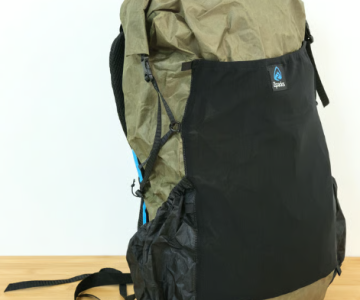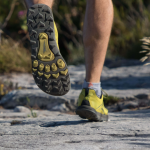When you’re headed out for a longer run, especially in more challenging environments, having a way to carry water, an extra layer, and snacks can make all the difference. Enter hydration packs and vests—essential gear for any runner tackling extended distances or tricky terrain. While it’s hard to imagine running without these tools today, it wasn’t all that long ago that runners had to make do with nothing more than a water bottle and a lot of determination. Now, with numerous brands offering top-notch hydration solutions, choosing the right one can be a bit overwhelming. This guide is here to help you narrow down your options based on what matters most to you.
Choosing the Right Capacity
When selecting a hydration pack or vest, it’s important to think about two main factors: water storage and gear capacity. While some experts suggest that a certain volume of water or gear is ideal for a specific distance, these numbers can be limiting. Your needs will vary based on the environment, weather, and terrain. For example, a desert run might require a lot of water but only a few essentials, while a wet, forested trail may call for less water but more gear. It’s important to factor in all these variables when deciding on your hydration solution.
Water Capacity
The amount of water you need to carry depends on how much fluid you lose through sweat and how far you are from water sources. On average, most runners will need between 400-800 ml (13.5-27 oz) of water per hour, depending on the heat, exertion level, and body size. For longer runs with no reliable water sources, you may need to carry several liters.
Hydration vests vary in their capacity. Some, like those with bottle pockets, can carry around 1 liter, while others, featuring a reservoir, can hold up to 3 liters.
Gear Capacity
The gear you carry is influenced by the run’s length, terrain, and conditions. For most runs, you’ll likely want to bring a few essentials like sunscreen, a rain jacket, and perhaps a light first aid kit. For longer or more demanding runs, you may need to add a headlamp, water filter, phone, or even a GPS device. The right hydration vest will have enough space to accommodate these items without making the pack feel bulky.
While it’s tempting to go for a pack with more capacity “just in case,” too much empty space can lead to discomfort, as gear can shift and bounce with every stride. For most runners, finding the right balance—where the vest holds the essentials without being too large—is key. Some runners opt for two packs: one for short runs and another for longer adventures.
Water Bottles or Reservoir?
When deciding between bottles or a reservoir, the main consideration is personal preference. If you expect to carry more than 2 liters of water, a pack with both bottles and a reservoir is ideal. For smaller distances or lower water needs, a single water system is enough.
Pros and Cons of Bottles
Bottles have the advantage of allowing you to monitor how much water you have left at all times. It’s easy to refill them during a run, and many vests feature pockets designed for easy access. Soft water bottles, which are commonly found in hydration vests, conform to your body and reduce sloshing—a problem often associated with hard bottles. However, soft bottles are less durable and more prone to punctures if dropped.
Bottles also tend to make the vest feel more balanced by shifting weight forward, reducing the amount of bouncing during your run. They also offer versatility, allowing you to carry both water and electrolyte solutions without mixing the two. However, you’ll have to remove and replace them each time you need a drink, which can be a hassle during long runs.
Pros and Cons of Reservoirs
Reservoirs allow you to carry more water in one container, which can be ideal for longer runs. They also allow you to hydrate hands-free, making it easier to drink while on the move. However, refilling a reservoir during a run can be more cumbersome compared to bottles. You may need to remove the reservoir from the pack and submerge it in a water source, which can be inconvenient. That said, many runners find the convenience of having all their water in one container worth the extra effort.
If you do opt for a reservoir, a useful tip is to remove the excess air after refilling, which can help minimize sloshing.
Key Features to Look For
Hydration vests come with a variety of features that can improve comfort, storage capacity, and safety. Here are a few features to consider when choosing your pack.
Pockets and Storage
Hydration vests usually have several pockets for small items like gels, snacks, and a phone. Make sure the pockets are easy to access without having to stop. Zippered pockets are more secure, but they can be harder to access quickly. Stretchy mesh pockets, on the other hand, offer more flexibility.
Trekking Pole Keepers
If you’re a runner who uses trekking poles, look for a vest that includes trekking pole keepers. Some packs allow you to stow poles vertically on the chest straps, while others offer horizontal storage at the bottom of the pack. This feature makes it easy to carry poles without disrupting your stride.
Breathability
For runners who tend to heat up quickly, look for hydration packs with mesh panels or breathable materials. Areas like the back, shoulder straps, and waist should be well-ventilated to keep you cool during hot runs.
Reflective Strips
If you’re running in low-light conditions, reflective strips are crucial for visibility. While some vests offer minimal reflective features, consider adding extra lights to your pack for better safety during night runs or on poorly lit trails.
Whistle
Some hydration vests include a whistle attached to the sternum strap. A whistle can be a lifesaver in an emergency, as it’s much louder than your voice. While it’s a small feature, it’s one that can increase your safety on long, remote runs.
Getting the Right Fit
The right fit is essential for comfort and to prevent chafing. Hydration vests should fit snugly without being too tight. Look for a vest with adjustable straps, so you can customize the fit depending on your body size or layers you’re wearing underneath. A snug fit will also prevent gear from bouncing around as you run.
If you’re a woman, consider trying on a women’s-specific vest. These tend to have a different shape, with more room for the chest and narrower shoulders, providing a more comfortable fit.
Conclusion
Choosing the best hydration pack or vest depends on your personal preferences and running needs. Whether you prioritize water capacity, ease of use, or added features, there’s a hydration solution for every runner. Take the time to test out different packs and consider factors like capacity, fit, and comfort to find the right one for your next adventure.





